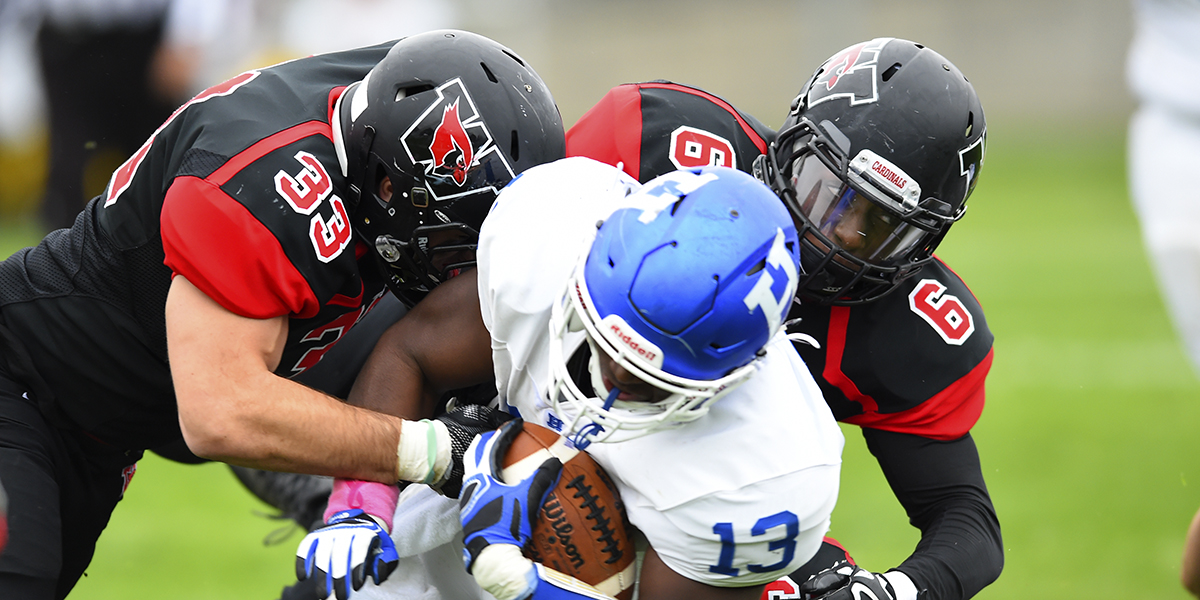
In late December, sports author Ben Strauss wrote an opinion article for Slate.com titled “The Liberal Arts Football Factory.” In his article, Strauss poses a question: “Is Wesleyan University compromising its independent reputation and academic excellence to build an athletic cash cow?”
Let me start by saying this: Wesleyan University is not trying to build an athletic cash cow.
Strauss makes valid statements about Wesleyan culture and academics, but his central thesis is financial, and it does not hold up.
Before explaining the incongruity of Strauss’ thesis regarding Wesleyan, I need to give him credit for helping to expose the injustice of unpaid student-athletes. Strauss also co-authored a book entitled “Indentured” about Division I sports. An interesting read, “Indentured” is a blistering exposé of the source of profits from Division I men’s basketball and football players.
In his book, Strauss used Division III sports as an argument to prove that profiting from collegiate sports is not necessary.
“If profits were needed to have men’s sports, the entirety of Division III would have vanished a long time ago”, said Strauss.
Therefore, it is strange that Strauss would accuse Wesleyan of attempting to become a “cash cow” because, per his logic, Wesleyan sports would have been gone before Wesleyan even thought about becoming a cash cow.
With that said, in his article, Strauss sees Wesleyan’s push to become better at sports, mainly football, as potentially dangerous to camaraderie among students. He contends these efforts are for a financial gain. My main point of contention with Strauss’ article is that he singles out Wesleyan for the wrong reasons.
“You might think that self-styled elite universities like Wesleyan would consider cutting ties with [football]”, says Strauss. “[But] in reality, liberal arts schools are investing in football.”
Strauss isn’t wrong. The only problem is that Wesleyan is not the only school heavily investing in football or athletics in general.
According to the article, the biggest sports-related spending project of President Michael Roth ’78’s tenure has been a $2.7 million lacrosse turf field. Meanwhile, other NESCAC schools have spent significantly more money in that timeframe. Colby plans to add a new $200 million athletic complex to their campus, and Williams spent $22 million on football field renovations. Also, Amherst recently spent $12.5 million on a football stadium, and Middlebury dropped $46 million on an athletic field house.
But if all of these schools are spending more than Wesleyan, even up to almost 100 times more, why are we being called the “cash cow”? Strauss reported all those spending numbers in his article, including Wesleyan’s mere $2.7 million. Yet he chose to come after Wesleyan.
Unfortunately, I have to give Strauss credit again. He actually did come here for a football game. However, blinded by his preconceived ideas about Wesleyan, he must have forgotten he didn’t even need to pay for a ticket. A small Division III school that doesn’t charge a single dollar to watch football games must be trying really hard to build an athletic cash cow.
It is also important to note that around 25 percent of the Wesleyan student body participates in varsity sports. However, Wes gives no athletic scholarships and very rarely produces professional athletes. This raises the question of why students even choose to play sports. Athletes play for the purest of reasons: sports are fun to play; athletes love the game; sports are good for your body; sports involve setting goals and working hard; they build teamwork and friendship. Sports are healthy for young people in a college setting.
Mr. Strauss characterized Division III sports extremely well in his book.
“No TV money, no hundred-thousand seat stadiums, no athletic scholarships, no million-dollar coaches. Just pure college sports,” he writes.
I agree with this characterization; however, it directly contradicts what he wrote in his Slate article. So, it confuses me why he would shift his narrative just a year after his book’s publication and accuse Wesleyan of creating a “cash cow” via football. After all, he’s the one who said DIII was all about “pure college sports.”
After reading the article multiple times and listening to one of his podcast features, I found one philosophy that might explain why Strauss thinks elite schools like Wesleyan are trying to be better at sports and football in particular: if you put more emphasis on athletics, school spirit will increase, so athletes donate money, and alumni donate money.
This philosophy is seen as major aspect of a classic Division I power conference school, one that Mr. Strauss most likely condemns. Unfortunately, Wesleyan is different from schools for all the reasons Mr. Strauss listed earlier: no TV money, no big stadiums, no athletic scholarships, etc.
There is no athletic cash cow to be made at Wesleyan and, even if there was, President Michael Roth has been on record contradicting just that.
“I would hope if I ever announced a $200 million athletics building that people around here would really protest, because I think that’s obscene,” Roth said.
Wesleyan is a Division III school with just under 3,000 undergraduate students. It is one of the most liberal and academically rigorous colleges in the country, and the idea that trying to win a few more football games will change the fabric of the institution is illogical.
Strauss wrote a great book that shed light on issues involving a system of corrupt athletics, but his new article is simply a reach, aimed at the wrong target.
Ben Owen can be reached at bowen@wesleyan.edu.


Leave a Reply